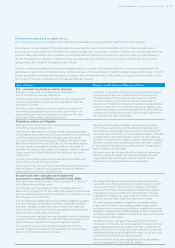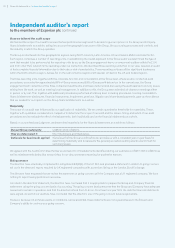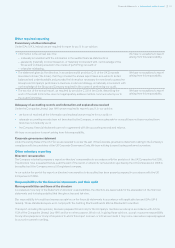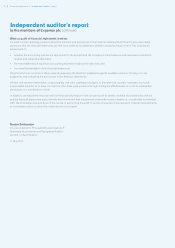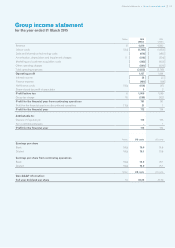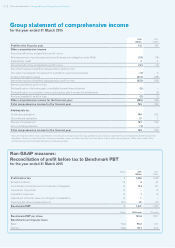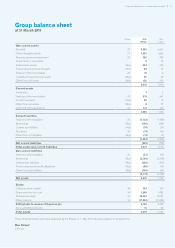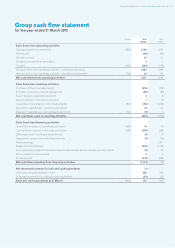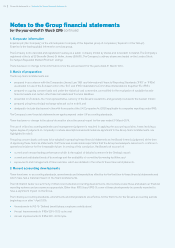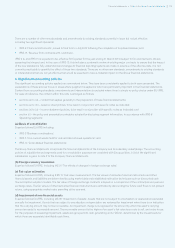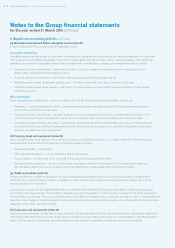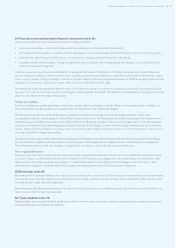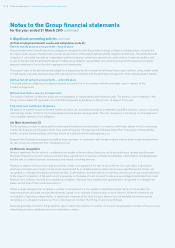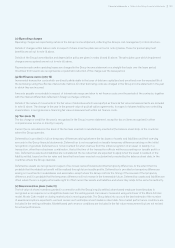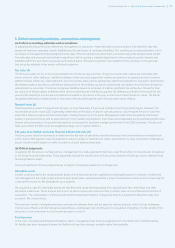Experian 2015 Annual Report Download - page 120
Download and view the complete annual report
Please find page 120 of the 2015 Experian annual report below. You can navigate through the pages in the report by either clicking on the pages listed below, or by using the keyword search tool below to find specific information within the annual report.
There are a number of other new standards and amendments to existing standards currently in issue but not yet effective,
including two significant standards:
• IFRS 9 ‘Financial instruments’, issued in final form in July 2014 following the completion of its phased release; and
• IFRS 15 ‘Revenue from contracts with customers’.
IFRS 9 is, and IFRS 15 is expected to be, effective for Experian for the year ending 31 March 2019 (subject to EU endorsement). We are
assessing their impact and, in the case of IFRS 15, this includes a systematic review of existing major contracts to ensure that the impact
of the new standard is fully understood and changes to financial reporting systems are made in advance of the effective date. It is not
currently practicable to quantify the effect of these two standards. There are no other new standards, amendments to existing standards
or interpretations that are not yet effective that would be expected to have a material impact on the Group financial statements.
4. Significant accounting policies
The significant accounting policies applied are summarised below. They have been consistently applied to both years presented. The
explanations of these policies focus on areas where judgment is applied or which are particularly important in the financial statements.
Content from accounting standards, amendments and interpretations is excluded where there is simply no policy choice under EU-IFRS.
For ease of reference, the content within this note is arranged as follows:
• sections (a) to (d) – content that applies generally to the preparation of these financial statements;
• sections (e) to (m) – balance sheet policies, to be read in conjunction with specific notes as indicated;
• sections (n) to (u) – income statement policies, to be read in conjunction with specific notes as indicated; and
• section (v) – the policy and presentation principles adopted for disclosing segment information, in accordance with IFRS 8
‘Operating segments’.
(a) Basis of consolidation
Experian follows EU-IFRS including:
• IFRS 3 ‘Business combinations’;
• IFRS 5 ‘Non-current assets held for sale and discontinued operations’; and
• IFRS 10 ‘Consolidated financial statements’.
The Group financial statements incorporate the financial statements of the Company and its subsidiary undertakings. The accounting
policies of subsidiaries and segments used for consolidation purposes are consistent with Group policies. A list of the significant
subsidiaries is given in note P to the Company financial statements.
(b) Foreign currency translation
Experian follows EU-IFRS, including IAS 21 ‘The effects of changes in foreign exchange rates’.
(c) Fair value estimation
Experian follows EU-IFRS, including IFRS 13 ‘Fair value measurement’. The fair values of derivative financial instruments and other
financial assets and liabilities are determined by using market data and established estimation techniques such as discounted cash
flow and option valuation models. The fair value of foreign exchange contracts is based on a comparison of the contractual and year-end
exchange rates. The fair values of other derivative financial instruments are estimated by discounting the future cash flows to net present
values, using appropriate market rates prevailing at the year-end.
(d) Impairment of non-financial assets
Experian follows EU-IFRS, including IAS 36 ‘Impairment of assets’. Assets that are not subject to amortisation or depreciation are tested
annually for impairment. Assets that are subject to amortisation or depreciation are reviewed for impairment when there is an indication
that the carrying amount may not be recoverable. An impairment charge is recognised for the amount by which the asset’s carrying
amount exceeds its recoverable amount. The recoverable amount is the higher of an asset’s fair value less costs to sell, and value-in-use.
For the purposes of assessing impairment, assets are grouped into cash generating units (‘CGUs’), determined by the lowest levels for
which there are separately identifiable cash flows.
119
•
Notes to the Group nancial statements Financial statements


